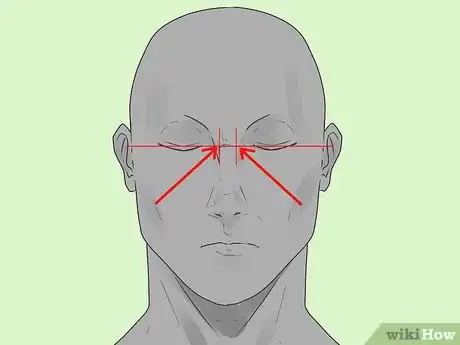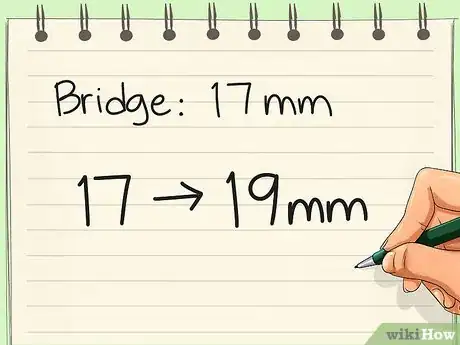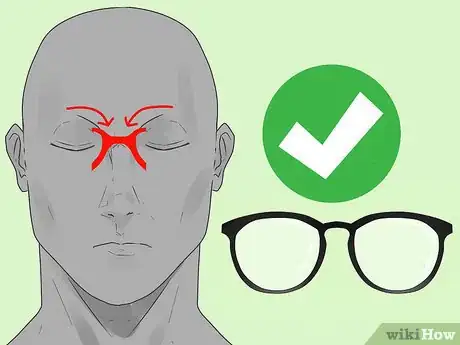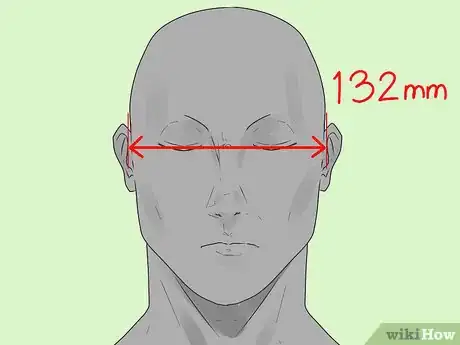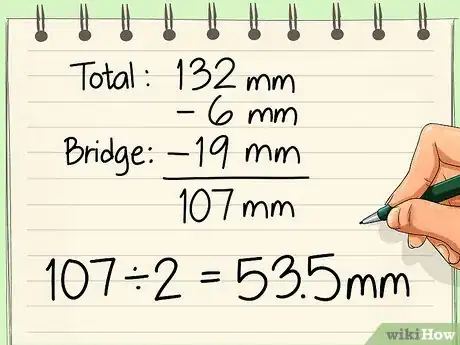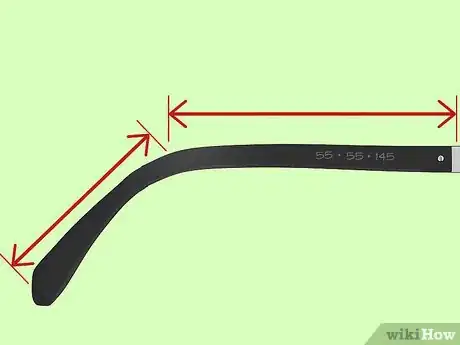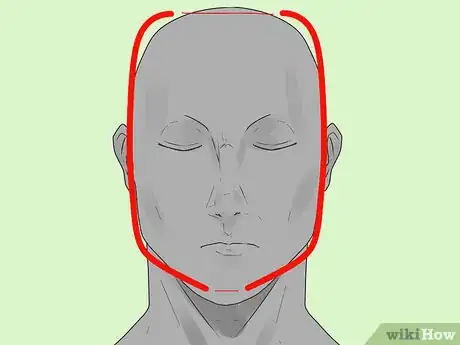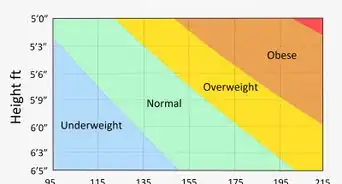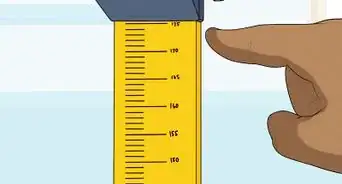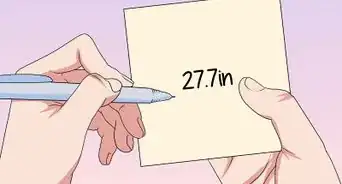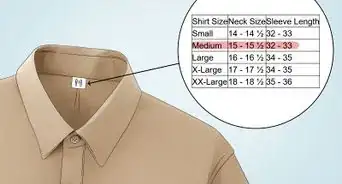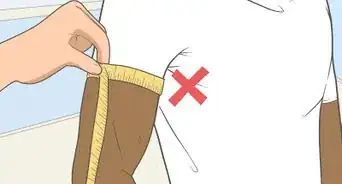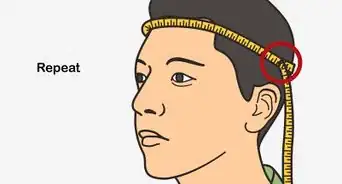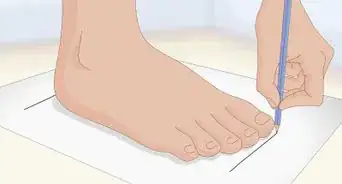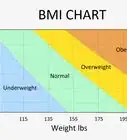This article was co-authored by Mark Cannon, OD. Dr. Mark Cannon is an Optometrist and Chief of Optometry at Cannon Eyecare, a family-owned optometry practice in Seattle, Washington. With over 10 years of experience, Dr. Cannon specializes in ocular disease, dry eye, glaucoma, eye infection, contact lens fitting, and pediatrics. Dr. Cannon holds a BS in Biology and Psychology from Indiana University. He received his Doctorate in Optometry from Indiana University School of Optometry, where he earned the Dean's Scholar award and participated in years of ophthalmic research. Dr. Cannon worked as an optometrist for four years before founding Cannon Eyecare, which offers full-scope medical optometry services. Dr. Cannon is a member of the American Optometric Association, King County Optometric Society, and the Optometric Physicians of Washington.
wikiHow marks an article as reader-approved once it receives enough positive feedback. In this case, 87% of readers who voted found the article helpful, earning it our reader-approved status.
This article has been viewed 305,920 times.
Eyeglasses are where fashion meets function, but your eyeglasses can’t encompass either of these qualities if they are sliding down your face every three minutes. While there are a few face measuring apps available, nothing is more accurate than taking the measurements yourself. After just a few simple steps, you will be prepared to order the perfect pair of glasses.
Steps
Measuring the Bridge of Your Nose
-
1Use a mirror or photo to find the position and width of your nose bridge. Your bridge measurements will determine the distance between one lens and the other. If you are using a photo, a side profile selfie will work best. Examine your nose to determine if your bridge is high or low, and whether it is wide or narrow.
- If the bridge sits below your pupils, then you should look for bridges in the 16–18 millimetres (0.63–0.71 in) range. If the bridge sits above your pupils, then you should look for a bridge in the 19–21 millimetres (0.75–0.83 in) range.[1]
- Judge whether your nose bridge is narrow or wide. If your eyes are close together, then your nose tends to be narrow, and if your eyes are further apart, then your nose tends to be wide.
- If your nose is narrow, then you want to aim for a bridge in the 14–18 millimetres (0.55–0.71 in) range, and if your nose is wide, you will want to seek bridges that are 18 millimetres (0.71 in) or higher.
-
2Adjust measurements based on the thickness of the frame you want. Once you have determined your bridge width and position, you need to adjust your measurements based on the thickness of the potential frame. The thicker the frame, the wider you will have to adjust the bridge width of your glasses to support the extra weight.
- If you have a bridge in the 16–18 millimetres (0.63–0.71 in) range, but want a thick frame, you should consider a 19 millimetres (0.75 in) bridge to account for the extra rim.
- Likewise, if you have a high bridge, but want thin frames, you should look for an 18 millimetres (0.71 in) (or possibly even smaller) bridge.[2]
Advertisement -
3Use your bridge position to select glasses with a high or low bridge. Not only do glasses vary in bridge width, they also come with different bridge positions. If you determined you have a high bridge, aim for glasses with a bridge at brow level. If you have a low bridge, you should seek glasses whose bridge dips below the brow.
Measuring the Width Between Your Temples
-
1Measure your temple-to-temple width using a mirror and ruler. Hold the ruler horizontally across your face and below your eyes. Measure the distance between left and right temples. Record the measurement in millimeters.
-
2Use your temple-to-temple width to find the total width of your glasses. The total width of your glasses (both lens frames + bridge) should correspond as closely as possible to your temple-to-temple measurement.
- For example, if your temple-to-temple width was 132 millimetres (5.2 in), then you should look for a pair of glasses with a width in the 130–134 millimetres (5.1–5.3 in) range.[3]
-
3Calculate your lens width using nose width and total width. Knowing the total width can also help you determine the proper lens width. Subtract 6 millimetres (0.24 in) and your bridge width from the total width and this will give you your lens width.
- Lenses typically range between 50–60 millimetres (2.0–2.4 in).[4]
Determining Temple Length and Face Shape
-
1Use your total width to determine temple length. The arms or temples of your glasses are the two pieces that attach to your frames and rest on your ears. While temples can range between 120–150 millimetres (4.7–5.9 in), they typically come in three preset sizes: 135, 140, and 145 mm. The wider your total width, the larger your temples need to be.
- If your total width was on the higher end you will want to opt for 145 millimetres (5.7 in) temples, or possibly more.
- If your total width was on the smaller side, then you should opt for the 135–140 millimetres (5.3–5.5 in) temples.[5]
- If you try a pair of glasses on, and the temple sticks out past your ear, you should look for a pair with smaller temples as this will cause discomfort.
-
2Determine if your face shape is circle, square, oval, or heart shaped. Pull your hair back and look straight in the mirror. Trace the outline of your face from hairline to cheekbone to jaw. Decide if the shape most closely resembles a circle, a square, an oval, or a heart.
- Circle-shaped faces have full cheeks, and the forehead and jaw have a similar width.
- Square-shaped faces have strong jawlines, as well as a forehead and jaw that are similar in width.
- Oval-shaped faces have a narrow jawline and narrow cheekbones.
- Heart-shaped faces have large foreheads and narrow jawlines.
-
3Match face shape to ideal lens shape. Circle-shaped, oval-shaped and heart-shaped faces tend to look better with boxier frames. Square faces match well with circular or oval frames.
Expert Q&A
-
QuestionHow often do you need new glasses?
 Mark Cannon, ODDr. Mark Cannon is an Optometrist and Chief of Optometry at Cannon Eyecare, a family-owned optometry practice in Seattle, Washington. With over 10 years of experience, Dr. Cannon specializes in ocular disease, dry eye, glaucoma, eye infection, contact lens fitting, and pediatrics. Dr. Cannon holds a BS in Biology and Psychology from Indiana University. He received his Doctorate in Optometry from Indiana University School of Optometry, where he earned the Dean's Scholar award and participated in years of ophthalmic research. Dr. Cannon worked as an optometrist for four years before founding Cannon Eyecare, which offers full-scope medical optometry services. Dr. Cannon is a member of the American Optometric Association, King County Optometric Society, and the Optometric Physicians of Washington.
Mark Cannon, ODDr. Mark Cannon is an Optometrist and Chief of Optometry at Cannon Eyecare, a family-owned optometry practice in Seattle, Washington. With over 10 years of experience, Dr. Cannon specializes in ocular disease, dry eye, glaucoma, eye infection, contact lens fitting, and pediatrics. Dr. Cannon holds a BS in Biology and Psychology from Indiana University. He received his Doctorate in Optometry from Indiana University School of Optometry, where he earned the Dean's Scholar award and participated in years of ophthalmic research. Dr. Cannon worked as an optometrist for four years before founding Cannon Eyecare, which offers full-scope medical optometry services. Dr. Cannon is a member of the American Optometric Association, King County Optometric Society, and the Optometric Physicians of Washington.
Board Certified Optometrist It can be hard to tell when things have changed enough to warrant a change, especially because it varies from case to case. One good way to tell is: are you having difficulty seeing what you need to see in all three distances — far away, intermediate and near? When in doubt, go directly to your local eye doctor and ask for a full eye exam with dilation.
It can be hard to tell when things have changed enough to warrant a change, especially because it varies from case to case. One good way to tell is: are you having difficulty seeing what you need to see in all three distances — far away, intermediate and near? When in doubt, go directly to your local eye doctor and ask for a full eye exam with dilation.
Warning
- If your bridge measurement is too small, then it will pinch your nose, and if it’s too big, then your glasses won’t stay put.
References
- ↑ https://www.coastal.com/thelook/your-perfect-bridge-measurement/
- ↑ https://www.coastal.com/thelook/your-perfect-bridge-measurement/
- ↑ https://www.businessinsider.com/how-to-buy-glasses-that-fit-your-face-2016-11
- ↑ https://www.groupon.com/articles/how-to-find-eyeglass-frame-measurements>
- ↑ https://www.specsavers.co.uk/glasses/buyers-guide/frame-size
- ↑ https://www.coastal.com/thelook/your-perfect-bridge-measurement/
About This Article
To measure your face for glasses, start by looking at the bridge of your nose straight on in a mirror. If it sits level with or below your pupils, your bridge size is in the 16-18 millimeter range. If it sits above your pupils, your bridge size is 19-21 millimeters. Keep in mind that you’ll need to size up from your normal bridge size when buying glasses with a thicker frame. Next measure the width between your temples in millimeters by holding a ruler horizontally across your face just below your eyes. Look for glasses with a total width that’s as close as possible to this number. To find your ideal lens width, subtract your bridge width and 6 millimeters from your temple width, then halve that number. Finally, use your temple width to determine what length the arms on your glasses should be. If you have a narrow or medium temple width, arms in the 135-140 millimeter range are ideal. If you have a wide temple width, opt for arms that are 145 millimeters or up.
